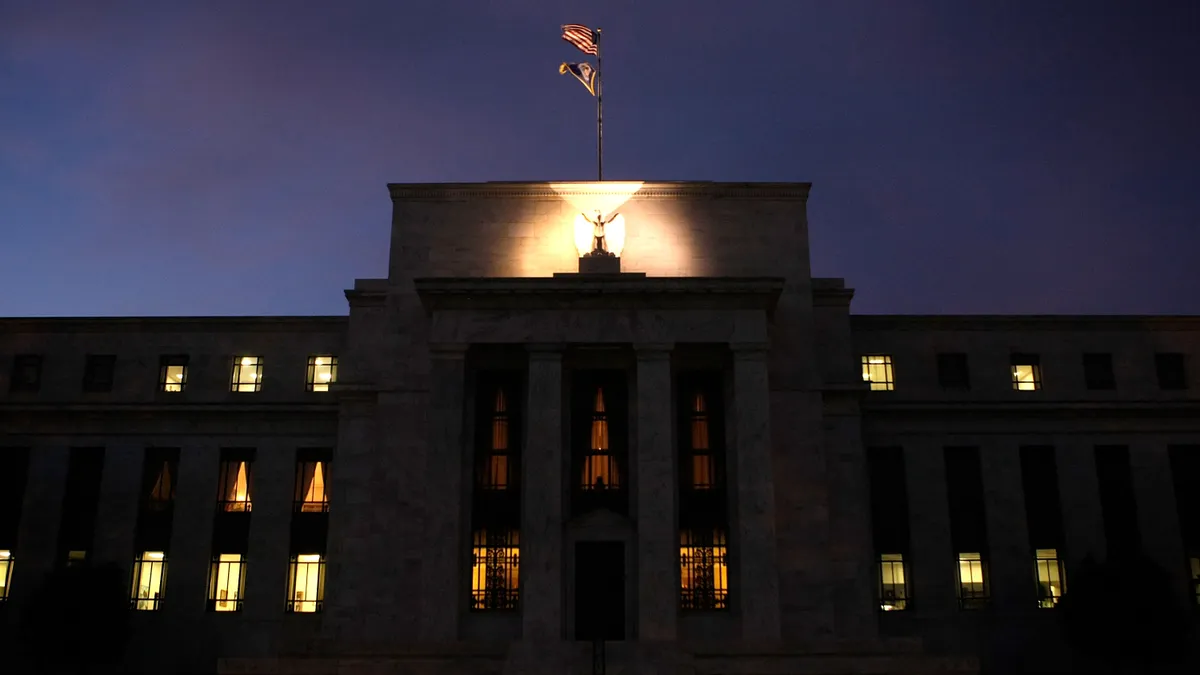Dive Brief:
- Federal Reserve officials during a recent meeting agreed on the importance of further monetary tightening, with a few participants calling for a half percentage point increase in the main interest rate rather than the quarter-point hike announced on Feb. 1.
- “The participants favoring a 50-basis-point increase noted that a larger increase would more quickly bring the target range close to the levels they believed would achieve a sufficiently restrictive stance,” according to minutes of the Jan. 31- Feb. 1 meeting of the Federal Open Market Committee.
- Fed officials plan not to reverse course and ease borrowing costs until inflation is clearly falling toward their 2% target, according to the minutes released Wednesday. “Participants observed that a restrictive policy stance would need to be maintained until the incoming data provided confidence that inflation was on a sustained downward path to 2%, which was likely to take some time.”
Dive Insight:
The Fed since early last year has tightened policy more than at any time since the 1980s by raising the federal funds rate from near zero to a range of 4.50% to 4.75%.
Inflation has eased from a four-decade high but persists at more than twice the Fed’s target, prompting policymakers to pledge further increases in the main interest rate at scheduled meetings in March and May.
The producer price index for final demand, a measure of what suppliers charge, increased 0.7% in January, the Labor Department said last week, in the biggest gain since June. Also, the Consumer Price Index — fueled by energy and shelter prices — rose 0.5% in January in the biggest gain in three months.
While failing to quash inflation, the central bank’s increase in borrowing costs has also not yet shown signs of cooling demand.
Retail spending surged 3% in January in the biggest monthly gain in nearly two years and manufacturing output rose 1% in after falling in November and December.
Also, the U.S. last month added 517,000 jobs — more than twice the number forecast by economists — and unemployment fell to 3.4%, the lowest level since 1969.
Several months usually elapse before an increase in the Fed’s benchmark rate slows growth.
Responding to signs of a strong economy, the Atlanta Fed last week marked up its estimate for first quarter gross domestic product growth to 2.5% from 2.1% in early February.
Solid growth raises the possibility of the Fed “both pushing its federal funds target rate higher than currently expected and keeping it there for longer to meaningfully slow economic momentum and inflation, posing larger and longer-term risks to the economy and financial stability,” Fannie Mae economists said.
“A mild recession is in the cards,” with gross domestic product likely to shrink 1.6% during the second quarter, Fannie Mae Chief Economist Douglas Duncan said in a statement.
Fed officials during the recent FOMC meeting agreed on the hazards of prematurely pausing their increases in the federal funds rate.
“A number of participants observed that a policy stance that proved to be insufficiently restrictive could halt recent progress in moderating inflationary pressures,” the minutes said.














